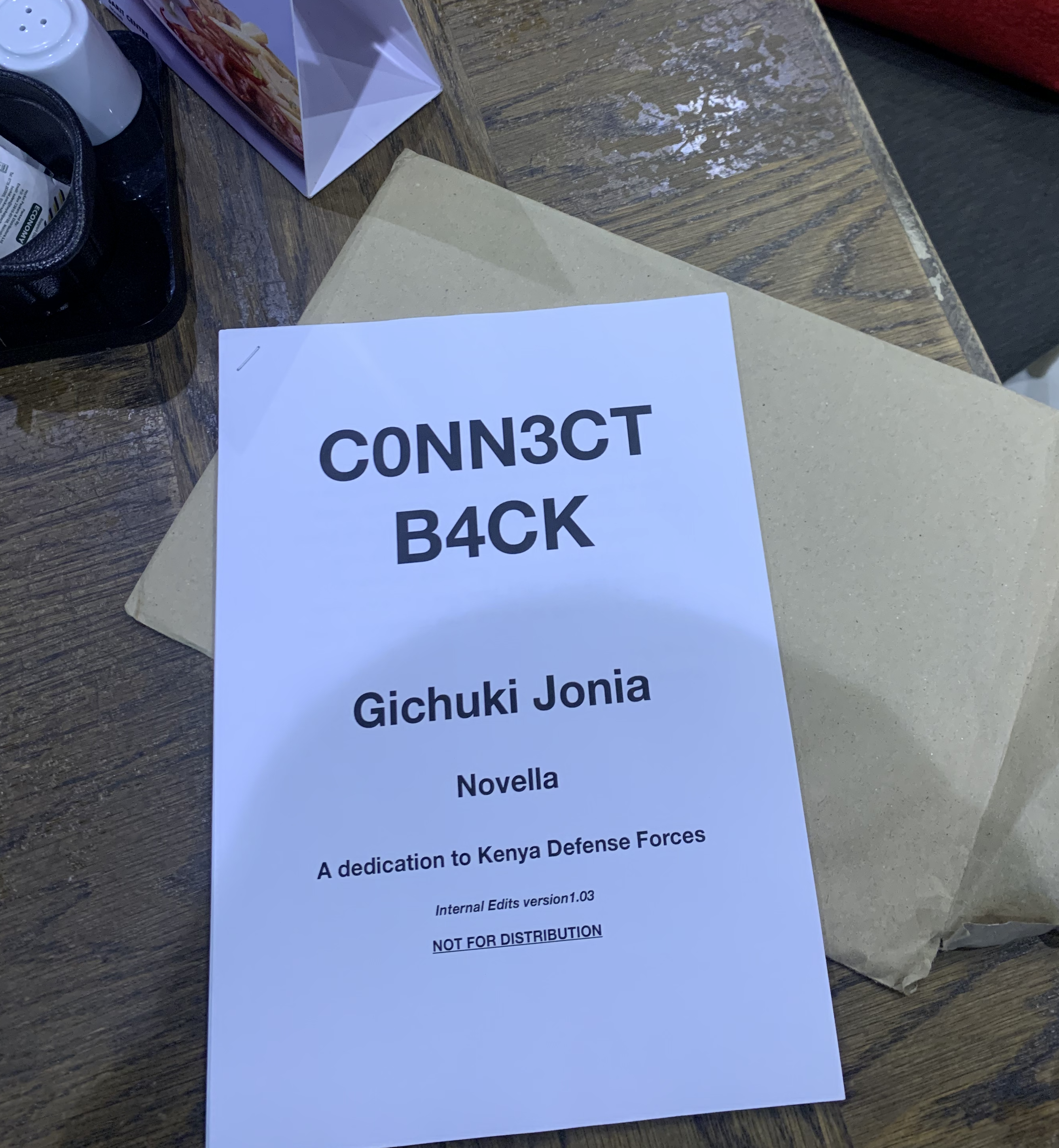MISSIONS THAT BROUGHT C0NN3CTB4CK HOME

A sit down with the editor on the first eight chapters.
a) Conducting threat hunting operations for Kenyan Embassies in Europe.
During this period, we encountered numerous adversaries,
including the Chinese, Russians, and, of course, Americans.
b) Engaging in counter cyber operations (CCO) against the Forkbombo Cyber Cartel,
a significant operation involving a group that employed on-the-ground operatives.
I vividly recall the moments when we had to jump from ceilings and
navigate through narrow spaces to reach rooms where collaborators were assisting
the cartel in infecting machines. Most of these encounters took place on the third floor of the said tower.
c) Executing a counter cyber operation against a Russian ransomware actor in a bank.
During this DFIR operation, we made the astonishing discovery of American intelligence
team accessing Western Union servers. It was an extraordinary feat,
especially when we traced their activities to servers in Warsaw, Poland,
which ultimately led us to a controller in Texas, United States.
d) Dealing with political officers who impeded our efforts to protect the country
for their own personal gain, especially that they were seeking promotions
and engaging in corrupt deals. For instance, when combating the Forkbombo Cartel,
a Colonel had the audacity to claim in a report that the Kenya Revenue Authority (KRA)
was not under attack and that a flash drive had been inserted into QRadar,
which caused its failure to boot and operate.
The report denied the existence of any cyber attacks, thus the government loosing billions.
e) Drafting the first NC3 document in 2014,
aimed at establishing a task force composed of law enforcement agencies,
intelligence services, and the military on a single floor.
The goal was to enhance coordination and collaboration in
both offensive cyber operations (OCO) and defensive cyber operations (DCO)
for the benefit of the country.
This initiative would eventually lead to the formation of elite team capable
of countering aggressive adversaries and highly skilled CNO actors employed by other nations.
Obviously, the plan was evidently infiltrated by astute political officers.
f) Delivering training to various military classes worldwide,
focusing on computer network operations (CNO),
particularly the Information Maneuver Training and Readiness (IMT&R).
The objective was to cultivate capabilities for future operators as
threats from various actors intensified, resulting in disruptions,
intelligence collection, and tangible economic damages.
g) Addressing insider threats posed by individuals with Top Secret clearances and beyond;
who were causing significant harm to the country in ways we may never fully comprehend.
Fortunately, we leveraged the concept of Computer Network Exploitation (CNE)
to collect information from these individuals, ensuring their actions did not go unchecked.
C0nn3ct B4ck will be coming your way, mid 2023 for Amazon kindle readers.
